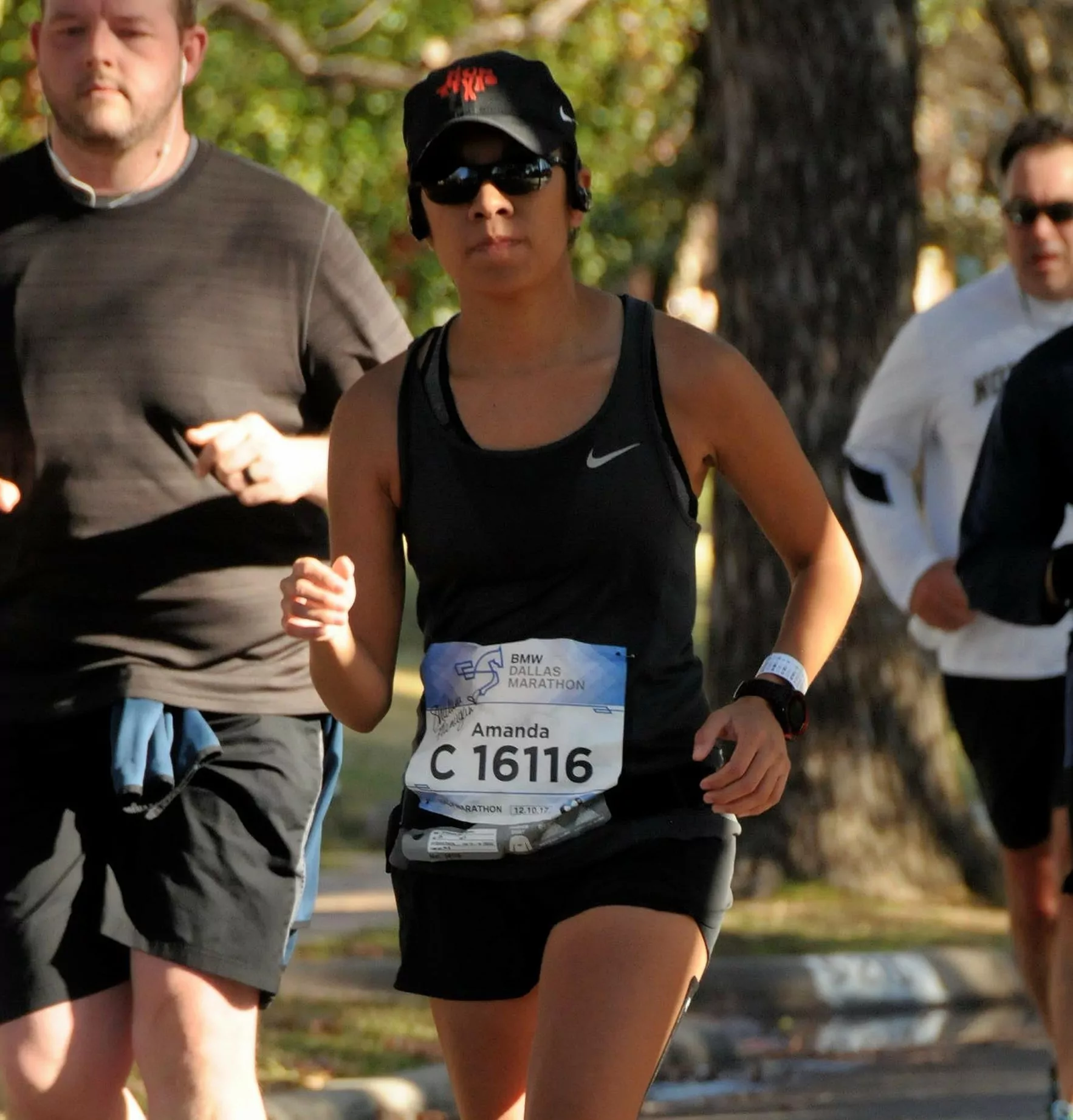
Vestibular migraine kept Amanda from her passion – running. Now she's back in the race.
I was running about 200 miles a month before it happened. I was the type to clean my baseboards regularly. I was a project person. I was a freelance journalist, constantly interviewing people, constantly working on deadline.
And then on an afternoon in 2014, I felt dizzy. I was lightheaded and foggy. It went away for a few days and then came back. Then, one day, it stayed.
I tried to shake it off at first. I tried to work through it, but eventually, I had to see a doctor. And then another doctor. In total, I visited some seven doctors and specialists. There were many diagnoses. Inner ear infection. Anxiety. Stress. Dehydration. I had a range of tests. An EKG said my heart was fine. An MRI said my brain was clear. Blood tests were all normal.
On my worst days, I slept all day long. When I had to get up, I dragged my fingertips across the wall to steady me. The dizziness was constant. The room rocked around me, slowly teetering and rolling. I couldn’t bend down without making the dizziness worse. Cleaning was impossible because I had to look down. Showering was hard because I had to look up. Working was impossible because I couldn’t focus.
Finally, an inner ear specialist said the dizziness could be linked to my migraines— something I had dealt with since middle school. I was sent for eight weeks of vestibular rehabilitation and then another specialist prescribed 12 more weeks. I spent weeks shaking my head back and forth and focusing on a playing card, trying to train my brain to accept dizziness and movement. The rehab offered little help.
I underwent videonystagmogram (VNG) testing, a terrible (but telling) test where hot and cold air is shot into your ears to provoke vertigo. They suspected a vestibular problem. I had never heard the word “vestibular” before. I didn’t know there was such a disorder,
I found a doctor at The University of Texas Southwestern Medical School in Dallas who specialized in vestibular disorders. I was placed on a four-month waiting list. In October of 2015, just two weeks after I was wait-listed, his office called me and said they could see me the next day. It was an answered prayer.
After a two-hour exam with the specialist, he confirmed my diagnosis. I had vestibular migraine.
We tried a few medications, and then finally the winner. It had been a nearly two-year journey.
After the diagnosis, I found VEDA. Their website spelled out exactly how I felt. The tools they provided and resources and information renewed hope in me. I wasn’t the only one struggling with what seemed like an unheard of disorder.
My husband and I poured over the information together. He had been supportive every step of the way. He took over responsibilities of cooking and cleaning. He took the dogs to daycare so I wouldn’t have to worry about them all day. He left me encouraging notes. He told me not to give up when the dizziness was so bad I cried. He kept me steady.
He wasn’t the only one in my tribe. A group of my friends once picked me up after I had stopped driving and took me out of the house. One friend picked me up after a doctor’s appointment. Another friend agreed to drive me home after the VNG testing, when my vertigo was provoked and I was sure I would throw up in her car. I’ve had friends pray for me and encourage me and walk this journey with me.
Some days, it’s still hard. I get a little dizzy on long days. I have to be careful of certain triggers: crazy weather, flashing lights, not getting enough sleep.
But I’m working again, writing again. I was hired to be an assistant track coach at the middle school and high school level. I’m constantly on my feet, chasing students around a track— something I never thought I could do.
And best of all, I’m running again. In December 2017, I ran the BMW Dallas Half Marathon. It was my second half marathon (the first I ran early in my dizziness and I slogged through with a foggy head). But this half marathon in Dallas was a comeback race for me. Where I had been overcome with dizziness in that first half marathon at mile 7, at mile 7 in Dallas, I felt exhilarated. I picked up my pace. I finished strong.
That’s why for my Step-2-Balance goal, I’m planning on running a 10K (6.2 miles) in less than 59 minutes. That’s a 9:29 pace, a pace I haven’t run since before I became dizzy. I’ve been too afraid to push the pace for too long of a distance, but I’m ready to push my own boundaries again. And ready to cross that finish line.
